#okinawan
Text
By Luke Gentile
The FBI announced last week its recovery of at least 22 historical artifacts taken after the American victory at the Battle of Okinawa in World War II.
A deal to return the artifacts to the Government of Japan, Okinawa Prefecture, was arranged via the FBI, and a repatriation ceremony will be held after the artifacts return for the first time in nearly eight decades, according to a release from the FBI Boston Division.
Several artifacts date back to the 18th and 19th centuries and hold a place in the long history of Okinawa, including portraits, a hand-drawn map, pottery, and ceramics, the release noted.
“It’s incredibly gratifying when the FBI is able to recover precious cultural property that has been missing for almost 80 years,” Jodi Cohen, the special agent in charge of the FBI Boston Division, said.
“This case highlights the important role the public plays in recognizing and reporting possible stolen art. We’d like to thank the family from Massachusetts who did the right thing in reaching out to us and relinquishing these treasures so we could return them to the people of Okinawa,” Cohen said.
Multiple artifacts now returning to Okinawa were registered with the FBI’s National Stolen Art File in 2001 by the Okinawa Prefectural Board of Education, according to the release.
In 2023, the family of a late World War II veteran (who did not serve in the Pacific) discovered some of the valuable Asian art while they went through his personal items, and they found at least four of the works in the National Stolen Art File, according to the FBI.
“It’s an exciting moment when you watch the scrolls unfurl in front of you and you just witness history, and you witness something that hasn’t been seen by many people in a very long time,” Geoffrey Kelly, an FBI Boston special agent and Art Crime Team member, said.
“These artifacts are culturally significant, they’re important pieces of Japan’s identity. These were especially important because they were portraits of Okinawan kings dating back to the 18th, 19th centuries. This case really illustrates part of the work we do on the Art Crime Team. It’s not always about prosecutions and putting someone in jail. A lot of what we do is making sure stolen property gets back to its rightful owners even if it’s many generations down the road,” Kelly said.
Assisting the FBI in the return of the items was the Smithsonian Institute’s National Museum of Asian Art, according to the release.
“The FBI reached out, asked us for some help making sure they knew how to care for the works and that they had a safe place to store them while they worked out the repatriation details. It’s an honor to be able to help the works go back to their home,” Danielle Bennett, the head of collections management at the National Museum of Asian Art at the Smithsonian Institute, said.
You can see all of the recovered artifacts here.
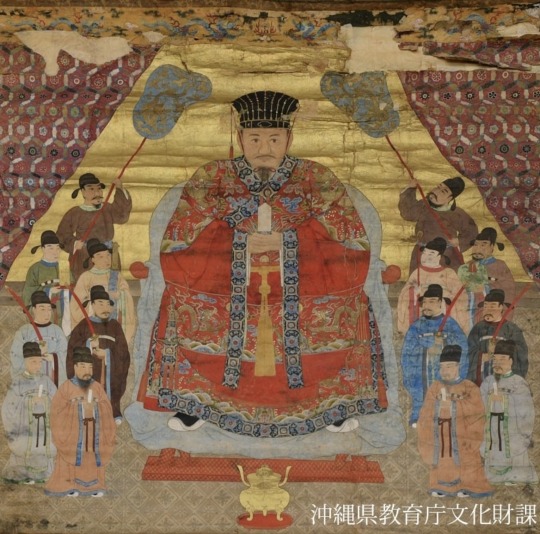
54 notes
·
View notes
Text
Month wrap-up
Korean: 383 words this month, the biggest amount this year! This was my main focus this month. Picks of my favorite words from this month:
교대 交代 - taking turns
당청되다 當籤- - to win the lottery
마땅히 - properly
석화 石花 - oyster
일당백 一當百 - equal to 100 warriors
출하 出荷 - shipment
Japanese: only 57 words this time! I feel like I've studied more though. I've gotten better at listening! Favorite words:
いれい 慰霊 - consoling the dead
しけ 時化 - stormy weather at sea
でんち 電池 - battery
よてい 予定 - plans
Mandarin and Cantonese: I haven't focused on these much this month. However I've been listening to both languages a bunch.
Mongolian: I haven't logged the words I know because I'm learning it with a different approach. But I've been studying it a lot and am learning a bunch of new words!
Toki Pona: I can now understand written text 99% of the time. I should practice writing next.
Okinawan: I've learn the Okinawan version of every Japanese word I've studied this month. I'm progressing steadily.
Other languages: I've been learning random words from other languages too. Notably Hungarian (Which I haven't learned at all in the past). Maybe I should start studying it regularly!
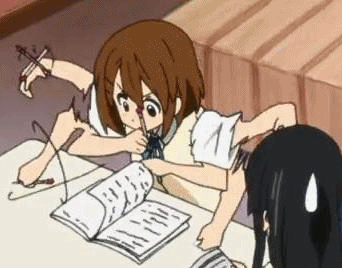
#langblr#language#korean#한국어#日本語#日本語勉強#mongolian#монгол хэл#toki pona#mandarin#cantonese#okinawan#hungarian#うちなーぐち#log#study blog#word list#studyblr
77 notes
·
View notes
Text
Lee A. Tonouchi
Special to Da Hawai‘i Herald
My great grandma who wuz born in Okinawa in 1885 had traditional Okinawan hand tattoos known as hajichi. Esteemed Okinawan cultural expert, Eric Wada of da eju-ma-cational group Ukwanshin Kabudan wen do field research on what motivated Okinawan women for get their hajichi. Wada Shinshï (teacher) shares “hajichi was around and in use from pre-contact times so there is no written documentation of exactly when and how it started, however through oral and documented information, it evolved into a woman’s right of passage to adulthood and had many other spiritual connections, such as genealogy, cosmology and social status.”
Growing up my great grandma felt ashamed of her tattoos cuz in Okinawa, Okinawans wuz coming for be made for feel ashamed of everyting Okinawan. When she came Hawai‘i to work plantation, my great grandma wuz so self-conscious that she made my grandma promise that when she ma-ke time, she wanted to be put in da casket with gloves on.
But how could something that wuz once one mark of great cultural pride transform into one mark of shame? Wada Shinshï explains, “hajichi was banned and discouraged after the illegal annexation and overthrow of the Ryükyü Kingdom in 1879, which resulted in implementation of assimilation programs by the Japanese government, which brainwashed the native people to be ashamed of their ‘savage’ cultural practices and assimilate to the modern and ‘civilized’ Japanese culture.”
For da past several decades dis art form for Okinawan women had been dying out to da point where I noticed that most of my younger friends in Okinawa had nevah even seen hajichi before. Das how rare it wuz.
Interestingly, in da past couple few years seems like get one revival going on. Wada Shinshï shares his mana‘o on dis phenomenon: “I am happily cautious about the hajichi resurgence and optimistic because things that have been put to sleep can come back. There will be individuals who just want to do it as a fad or without such deep connections, and that is their choice, but for the most part, I see more interest in reviving the tradition connected to the deeper spirituality and identity.”
Below get tree young Local Uchinänchu women and their hajichi stories.
Read more...
21 notes
·
View notes
Text
continuing the left hand 💕

couldnt find time to finish everything but still good practice to sketch it out anyway
hajichi questions always welcome, lets decolonize together 🫶🏽
#hajichi#hajichiaa#handpoke#selfpoke#okinawa#okinawan#uchinaanchu#uchinaa#haitai#haisai#indigenoustattoo#indigenous art#indigenous cultural revival
23 notes
·
View notes
Text
Okinawan Verbal Morphology / 沖縄語の動詞形態論
Okinawan has an agglutinative morphology which involves “glueing together” bits of information. This is very similar to languages such as Japanese and Korean.
Okinawan, and many Ryukyuan languages, have retained some grammatical forms now obsolete in Modern Japanese. One of these is the attributive form. The present and past tense of verbs in Okinawan inflect for the attributive form, as well as a terminal form ie the dictionary form. However, other innovations have occurred in Okinawan such as losing the object marker and the subject and genetive marker sounding phonetically the same in certain contexts. In this lesson I will only teach the plain form to introduce the basic verbal morphology. I will also not be teaching the specific conjugation rules. A full list of tenses can be found at the end under further reading.
NOTES:
In all lessons, romanisation will not be used. A full guide to hiragana will be attached under further reading.
Lessons will include a colour code: new terms and concepts will be blue and feature focuses will be red. The words in blue will be defined at the bottom of the page under definitions.
Further reading gives additional resources which will help in your study of Okinawan.
Affirmative:
Present:
The present tense ending is simply the dictionary form of a verb.
For example:
咬むん(かむん) - to eat; (I) eat
言ん(っゆん) - to say; (I) say
考ーゆん(かんげーゆん) - to think; (I) think
聞ちゅん(ちちゅん) - to hear; (I) hear
話すん(はなすん) - to speak; (I) speak
Past:
All past tenses comprise of an alveolar consonant (or avleolo-palatal) + aん:
〜たん,〜ちゃん, 〜だん, 〜じゃん
For example:
咬だん - (I) ate
言ちゃん - (I) said
考げーたん - (I) thought
聞ちゃん - (I) heard
話ちゃん - (I) spoke
Negative:
Present:
The negative is a little bit less predictable since they are a mixture of alveolar sounds, [k] and [m]. They also are of the structure aん like the affirmative tenses:
あん, かん, がん, さん, らん, まん, だん
For example:
咬まん - (I) don’t eat
言やん(っやん) - (I) don’t say
考げーらん - (I) don’t think
聞かん - (I) don’t listen
話さん - (I) don’t speak
Past:
The past negative is actually pretty simple, it comprises of the negative form plus たん:
あんたん, かんたん, さんたん etc
For example:
咬まんたん - (I) didn’t eat
言やんたん - (I) didn’t say
考げーらんたん - (I) didn’t think
聞かんたん - (I) didn’t listen
話さんたん - (I) didn’t speak
Attributive:
The attributive form is made by removing ん and adding る in the present and present negative.
Examples:
広いさる(ふぃるさる)猫(まやー)- A big cat
話さんたる女子(うぃなぐ) - A woman who didn't speak
Conclusion:
This lesson was focused on the plain form present, past, negative and past negative forms. This was by no means a detailed guide of the individual rules. The attached Google Doc will give more information on the specific conjugation types arranged into tables. It also has other forms including the passive, desiderative and causative among others. That Doc will give the detail that this lesson was missing simply because there’s not much to say on the specific conjugation types that can’t be included in tables.
> Definitions:
• Agglutinative - from the Latin “agglūtinō”, “to glue (together)” which involves adding morphemes to a root. These morphemes usually don’t mean much (if anything) on their own. This is contrasted with fusional languages where one morpheme can be used in different situations and these are usually “words” as defined in English.
• Attributive Form - a form of a verb to use it to describe anything (in this case) after it ie as an adjective
• Object Marker - marks the object of a sentence ie the thing that the verb is affecting eg I eat watermelon, “watermelon” is the one receiving the “eating” - Japanese: 私は西瓜を食べる (watashi wa suika wo taberu), “wo” = object marker, marking “suika”. Okinawan: 我んねー西瓜咬むん (wannee shiikuwa kamun), lack of an object marker unlike Japanese.
• Subject Marker - the subject and topic markers are very similar in usage and both handle information being known or not. The best way to understand the usages is to see them in a sentence.
• Genetive Marker - this shows possession eg 猫ぬ目 (mayaa nu mii) - the eye of the cat. This marker is used in the same position as the ‘s strategy of possession in English eg the cat’s eye; the marker directly follows the possessee.
> Further Reading:
Full Conjugation Tables: https://docs.google.com/document/d/1-ew99qbNZHqpuNwDHYTzsTEpoLWdD1OANqWVic7LS4I/edit
Hiragana Tables: https://docs.google.com/document/d/12Z__i6Ay7wXm1H-40wLTqRKluyz_IlOYrRxrHWDnm8s/edit
15 notes
·
View notes
Text
Ii soogwachi deebiru!
Which means “Have a happy New Year” in Uchinaaguchi/Okinawan. Kind of. Like most translations, there’s a trade off between functional equivalency and literal meanings. In this case, I went with the functional version.
Here’s the literal one:
ii or yii: good*
soogwachi: first month (and by extension, the new year)
deebiru: is/will be**
So, “This is/will be a good new year” is a more literal translation.
* It’s very likely that both pronunciations being valid is related to why the word for “good” in Modern Japanese is ii or yoi, depending on context. I’ve done absolutely no research into this hypothesis, so take it with a grain of salt. I am a linguist, but I’m not a Japanese-Ryukyuan languages linguist; my specialization is second language acquisition and English language education.
** Kind of. Deebiru is 1 of at least 3 Uchinaaguchi copular verbs. A full explanation is probably beyond my ability at this point. If you’re familiar with Modern Japanese, this is similar to and a cognate with でございます. If you’re not familiar with Japanese, 🤷🏻♀️. Wish I could help, but I can’t at this time.
tl;dr Deebiru means “is” or “will be” here, but not necessarily elsewhere.
Bonus
Earlier today, a friend asked me why I use Latin characters to write in Uchinaaguchi instead of hiragana. Part of the reason is because it makes what I write accessible to Uchinaanchu/Okinawans who don’t read Japanese. The rest of the answer is because neither hiragana nor Latin characters are native to Okinawa; there is unfortunately no native writing system, and if I have to pick a colonizer writing system, I’m going to pick the one that doesn’t require weird hacks to make work with Uchinaaguchi phonology. There are a bunch of sounds that Okinawan has that Japanese doesn’t***, and there’s just no good way to write them in hiragana.
Example 1: “gwachi” (month) from the above “soogwachi” isn’t a possible word in Modern Japanese****. I’d need to write ぐゎち to get there, which is kind of goofy. If you don’t read Japanese, that’s like, “Say gu, but drop the u and add a wa, then say chi.” It’s silly, but not super complicated, which is why it’s only Example 1.
Example 2: ‘kwa (child) is pretty understandable for most folks used to reading Latin characters, aside from the apostrophe, which represents a glottal stop, which is the consonant in the middle of “uh oh” and between the Is of Hawai’i. Written in hiragana, it’s っくゎ, which will just straight up baffle most Japanese speakers, because っ is not an OK way to start a word.
Example 3: ‘nma (horse) is one step further, with an upsetting hiragana transliteration of っんま. Neither っ norん are supposed to go before a full syllable in Japanese, and here both of them are.
Example 4: But, wait. We can go one step beyond that! Nnna means “everyone,” and yes, all of those Ns are important; nna, ‘nna, and na are different words. Nnna could be written as んんな or っんな, neither of which will make anyone happy.
So, yeah. I write Uchinaaguchi using Latin characters because using hiragana just seems messy. And I like making what I know accessible to my fellow diasporic Shimanchu.
*** Modern Japanese has the sounds, but can’t use them the same way, because Japanese has a bunch of sound shifts (allophones). Like, はひふへほ are the H morae (syllables-ish), and are theoretically pronounced ha hi hu he ho, except hi and hu don’t actually exist, because the ‘h’ inふ is a bilabial fricative, which is kind of an F sound, but not, and the ‘h’ in ひ is kind of like a cat hissing at you. The S and T morae have similar things going on, with si, ti, and tu being illegal in Modern Japanese, and shi, chi, and tsu replacing them. Uchinaaguchi, on the other hand, is fine with si & shi, ti & chi, and tu & tsu. Still no actual hi or hu in either language, though. Kind of a bummer for me, but at least I get to hiss like a cat when I introduce myself.
**** It was in Old Japanese, though. Maybe Early Middle Japanese, too. I don’t know. I told you I wasn’t a Japanese-Ryukyuan languages linguist. I do know that /gwa/ was actually the Old Japanese pronunciation of ぐわ, making it interesting that /gwa/ is fine in Modern Okinawan, but not Modern Japanese.

30 notes
·
View notes
Text
Okinawan yakuza are very based and cool and people should do some research on them
Imo I don't think they should even be called yakuza, if you're beating up on marines Im not bothered by it. I encourage it
-pissed off uchinanchu
18 notes
·
View notes
Photo
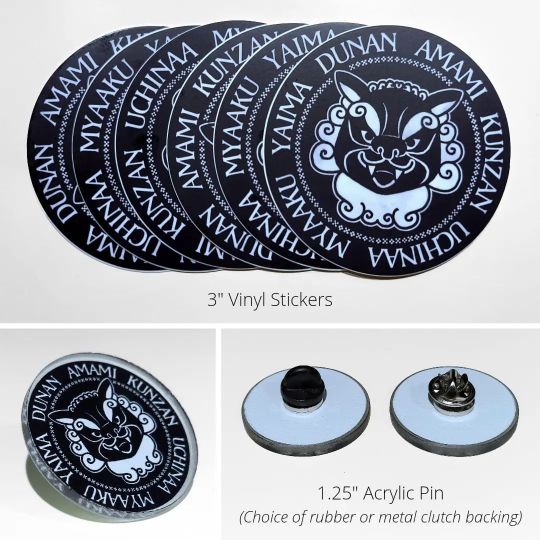
Haisai, gusuuyoo.
I hope everyone is safe and doing well.
I teamed up with Nami Oshiro, a fantastic Shimanchu American artist based in Virginia, to create the first three items in an ongoing effort to raise funds for independent Shimakutuba practitioners and projects.
Many Shimanchu creators and educators are doing the work on their own time and out of their own pockets, so I'm hoping that this (and future fundraisers) can be a small show of support and gratitude.
This 3" sticker, 2.25" button, and 1.25" acrylic pin set features a Ramones logo-inspired design with an open-mouth shiisaa symbolizing the sharing of good things, i.e. our indigenous languages. There are several distinct languages throughout the Ryūkyū Islands (all of which are endangered), so we decided to go with the six regions recognized by UNESCO: Amami, Kunjan (Kunigami), Uchinaa (Okinawa), Myaaku (Miyako), Yaima (Yaeyama), Dunan (Yonaguni).
Please visit the Ko‑fi shop today! All proceeds (minus item production costs and shipping fees) will be donated to individuals/groups and I'll post receipts once the donations are made.
P.S. I'm still selling items through the Shimanchu Dushi-nu-chaa Online Sale, if you're interested in combining shipping.
Shiisaa illustration by Nami Oshiro
- namioshiro.com
- inprnt.com/profile/namioshiro
- etsy.com/shop/iyasasa
- instagram.com/nami_oshiro
- twitter.com/namioshiro
#okinawa#okinawan#uchinaanchu#uchinanchu#shimanchu#ruuchuu#loochoo#ryukyu#ryukyuan#shiisaa#shisa#shimakutuba#uchinaaguchi#uchinaguchi#沖縄#ウチナーンチュ#琉球#島人#世界のウチナーンチュ#世界ウチナーンチュ#nami oshiro#art#artwork
27 notes
·
View notes
Photo
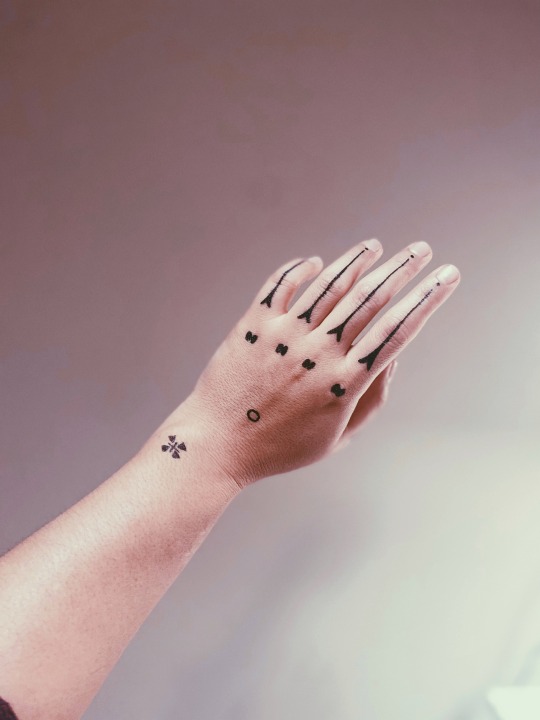
In the Ryukyu kingdom, women would get hand tattoos to mark rites of passage from childhood to womanhood, as indicators from where they are from and social status. Hajichi started to fade with the colonization and suppression of Ryukuyuan identity. Now it is starting to come back in a modern way, a reclaiming of identity for some Okinawans and the diaspora.
47 notes
·
View notes
Text

フチャギ Fuchagi
I made Fuchagi, a Ryukyuan (Okinawan) traditional sweet, for the Mid-Autumn Festival last year.
4 notes
·
View notes
Text
My studies this month
This month I've been focusing on other things and I even took a week off for a holiday! So I haven't logged my words or anything, but I can still tell what I've been studying.
Korean: I've been watching the news every day! I haven't been learning many new words this month.
Japanese: A lot of improvement! I can speak a lot more now and understand many new words! My favorite is コヲロコヲロ!
Mandarin: A lot of accidental immersion! I went for a holiday in the city and there were a BUNCH of Chinese people for some reason? I heard an unusual amount of the language this month.
Cantonese: Not much this month either! Watched a few documentaries in the language!
Italian: new language! My friend speaks it and I wanted to have a go! So far so good, seems simple!
Okinawan: I can speak simple sentences now! I need to work on my listening skills...
Ainu: also a new language! I want to focus on this a lot more this month!
French: I read a few news articles, not my main focus!
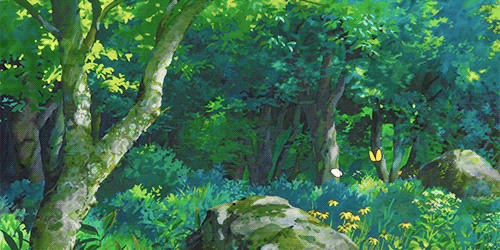
I've been focusing on conlanging all this time. I need to move my focus back to languages this month!
#langblr#language#learning#studyblr#month in review#korean#japanese#mandarin#cantonese#italian#okinawan#ainu#french
11 notes
·
View notes
Link
By Yuki Yamaguchi
For Minako Toguchi, every summer would bring on an identity crisis.
As a child growing up in Okinawa, the site of the biggest land battle to take place on Japanese soil during World War II, she was often taken on school trips during summer to war memorials, including Himeyuri Cenotaph in the south of the island where the deaths of more than a hundred schoolgirls who worked as war nurses are commemorated.
But every time she listened to war survivors talk about their memories of the fierce fighting against U.S. military forces, she was made conscious of her skin color -- slightly darker than her peers -- and that she has familial roots on both sides, given that her father, an African American, is a former U.S. soldier."I often asked myself, 'Am I allowed to be here? Am I hurting their feelings?'" said Toguchi, 27, who was born in the United States and moved to Okinawa with her Okinawan mother after her parents' divorce when she was little. "I wondered if the people who I share my roots with were such bad people."
Toguchi is one of many Okinawans of mixed parentage who wrestle with identity issues due to having former or current U.S. military personnel as family members. With close to 100,000 civilians having lost their lives in the fighting on Okinawa -- about half the total death toll there -- resentment toward the concentrated U.S. military presence on the island, which hosts the bulk of U.S. military facilities in Japan, runs deep.
Even half a century after the island's return to Japan from U.S. rule in 1972, Okinawans born with one foreign parent continue to face prejudice and discrimination. Indeed, because of long-lasting tensions between local communities and bases, many believe the level of prejudice is often more blatant than in the rest of Japan.
Local residents have repeatedly asked for the government to alleviate the island's burden of hosting the bases. One of the bases, due to be moved from the middle of a densely populated residential area to another part of the prefecture, has become a focus of protests with calls to move it outside Okinawa altogether.
But Tokyo has largely turned a deaf ear to the demands, recognizing the island's geographical importance for Japan and the United States, its ally, in the face of China's expanding military presence. Their frustrations have been sometimes vented on Okinawans of mixed parentage, who are generally assumed to be related to base personnel even if they are not, experts say.
Read more...
https://english.kyodonews.net/news/2022/05/f4293842f394-feature-mixed-race-okinawans-begin-to-find-voice-amid-tensions-over-us-bases.html
#Kyodo News#Yuki Yamaguchi#Mixed Race#Okinawa#Japan#Japanese Imperialism#Okinawan#Ryukyu#Ryukyuan#US Military
44 notes
·
View notes
Link
And boom just like that I finally uploaded a piece I’d been meaning to finish for the past...
(checks watch)
Year and a half...?
It’s about food--Okinawan food. And how pork is such a staple of the region yet it’s the one part of the cuisine that gets demonized in longevity fads.
(I think they’re fads anyway.)
9 notes
·
View notes
Text
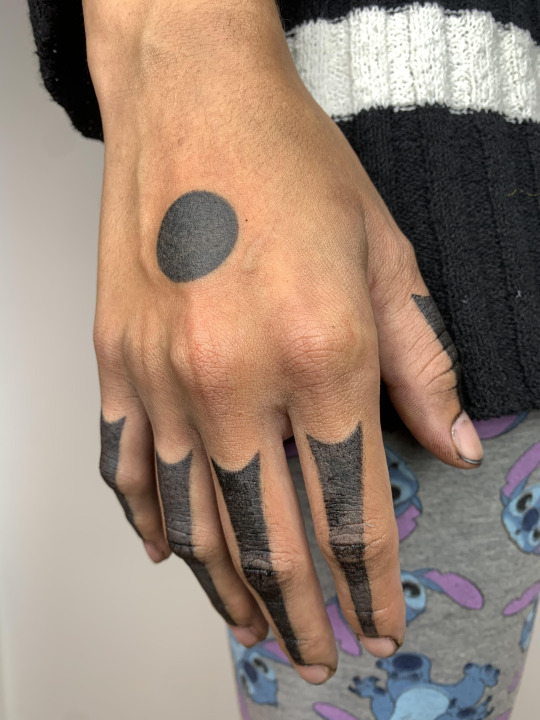
Hajichi progress! Another five hours handpoke added on.
#hajichi#tattoo#indigenoustattoo#okinawa#okinawan#uchinanchu#shimanchu#loochoo#uchina#yeah that's right I got stich leggins and you want them so bad#handpoke#stick and poke#stickandpoke#sticknpoke
5 notes
·
View notes
Text
沖縄を届ける
僕にあるのは音楽だけ。ひめゆり学徒隊の生き残られた女性からお話を伺ったお礼として、「島唄」を書きました。1993年に全国発売しました。時代はバブルの終わり。世の中は「拝金主義」の風が吹いていた。ストレートに沖縄戦を歌っても届かないと考え、ラブソングにして裏の意味を持たせました。
2024/03/13 朝日新聞(聞き手・山内深紗子)
坂本龍一が遺したもの
宮沢和史さんが語る
「美しさ」大切にする心 僕も伝える
0 notes
Text
(I intentionally left out many details of her life in this article on purpose.)
My mother-in-law Kazuko passed away on August 18, 2012 11:31 AM
Okinawa is known today as the Hawaii of Asia. As Kazuko's story begins in the days before the Battle of Okinawa. A story about an Okinawan woman who led a quiet life that was anything but that.
Japanese occupation started early for Okinawa (Ryukyu Kingdom). And with the events of WW2 leading up to the American forces getting closer to the Okinawa Islands. The Okinawans were barely surviving the Japanese occupation. And now they began preparing for the coming invasion from the American forces and millions of insects.
The Japanese military had built underground tunnels. Turning Okinawa into a fortified island. All at the expense of the Okinawan people.
Food had been taken by the Japanese soldiers that led to mass starvation. Okinawans who spoke their own language were killed as spies by the Japanese military.
Just before the American bombing began, people fled to the natural underground caves or tried to get off the island. For those that hid in the caves faced many obstacles. Millions of dangerous bugs inhabited these caves. Their bites were so painful that you wished you were dead.
The military worked the Okinawans into hysteria. To commit suicide rather than being captured by the American military. Many did commit suicide but the Japanese military were responsible for it. Kazuko, who was nine at the time, remembers hearing stories of gun fire inside the caves days before the Americans ever came ashore.
She remembers the Japanese military was providing refreshments for everyone in the caves. But as the US military preparedto bomb the island, the Japanese military never showed up. She later learned that those who drank the milk had died.
The US military came ashore as all the Okinawans did everything they were told to do. As everyone left the caves, they were shocked to see the landscape of the island. Trees, towns even the terrain was all gone.
She said it was like a barren wasteland. Covered with so many US military personnel and vehicles everywhere. Ships off in the distance made her think that she would never see her homeland restored again.
Tents were set up for everyone and there were doctors and other medical personnel to help all those injured. My mother-in-law had bite marks on her and the doctors bandaged her up.
She was also given candy by a few of the American soldiers. The military also provided meals for all the Okinawans. To this day the people of Okinawa really love pork and SPAM.
She got sick one day and the military nurses took care of her. She remembers there was plenty of food to eat and everyone took great care of her and other injured and sick people.
A few years after the war ended the US troops continued to stay on the island. Many people from other Asian nations came to help rebuild Okinawa.
In her final years, Kazuko travels were restricted due to health issues with her kidneys. Eventually she had to undergo dialysis. It wasn’t too long afterwards that this led to her death.
While in the hospital one of her granddaughters came to visit as my sister in law was preparing to visit Kazuko at the hospital. Once there Kazuko was starting to slip away.
Kazuko wanted to talk with her other daughters and grandkids. We were called nearly at midnight our time.
Kazuko’s hearing was going as we all had to scream into the speaker phone that we loved her. She finally acknowledged that she heard every one of us. The phone called ended but within two minutes we were called back. Kazuko had passed away.
Many current and former Okinawan government officials came to the funeral. It was a surprise to Kazuko’s family and friends. These officials grew up with Kazuko. They worked tirelessly in the days after WW2 to rebuild Okinawa.
A simple woman who survived many obstacle. Such as going against her doctor’s orders and came to America in 1999 and 2001 to see her newborn grandsons.
The final days of her life was going to the hospital every other day for dialysis treatments. Those treatments had blackened her body due to multiple needle marks.
But in those final moments of her life she was surrounded by her family in person and through cell phones. She died August 18, 2012 11:31 AM Japan time with the sounds of her children and grandchildren all expressing their love for her.
I have just scratched the surface knowing that there is more about her. She was a private woman who kept many things to herself. But I put a part of what I do know to print in the hopes that others can remember her as well.

22 notes
·
View notes